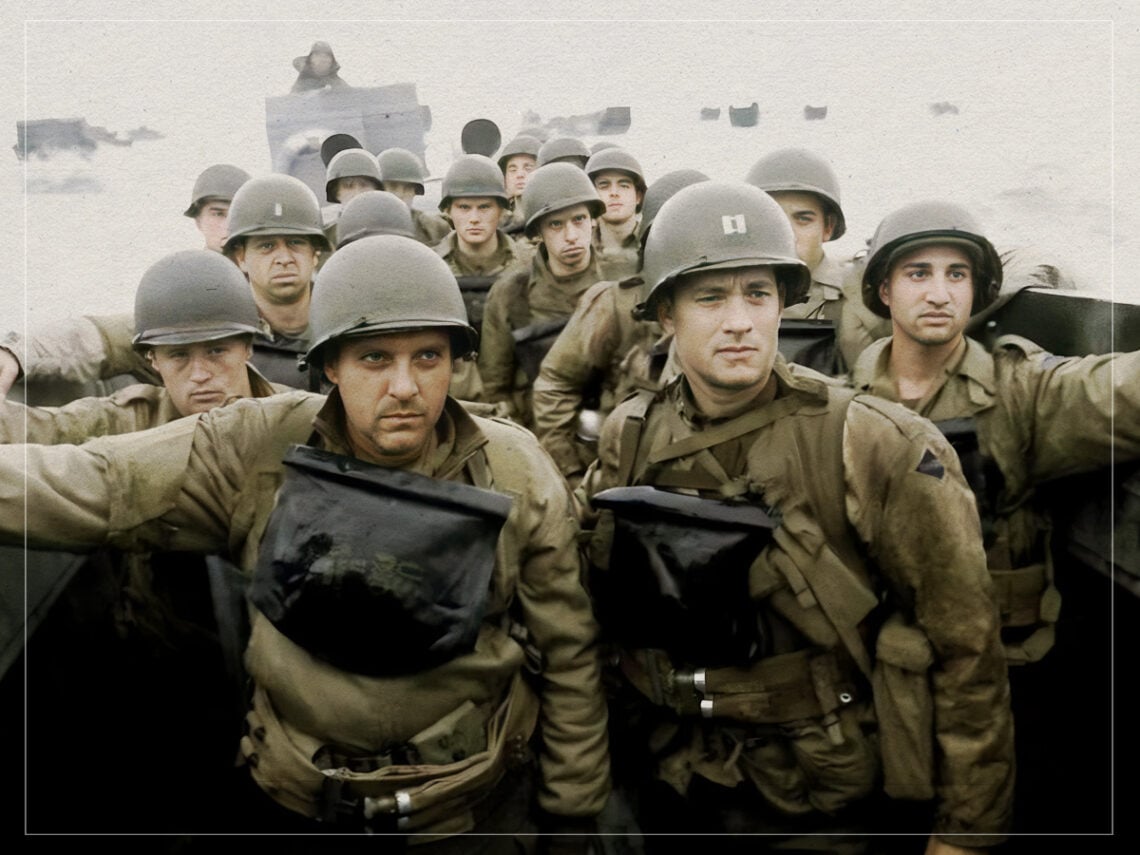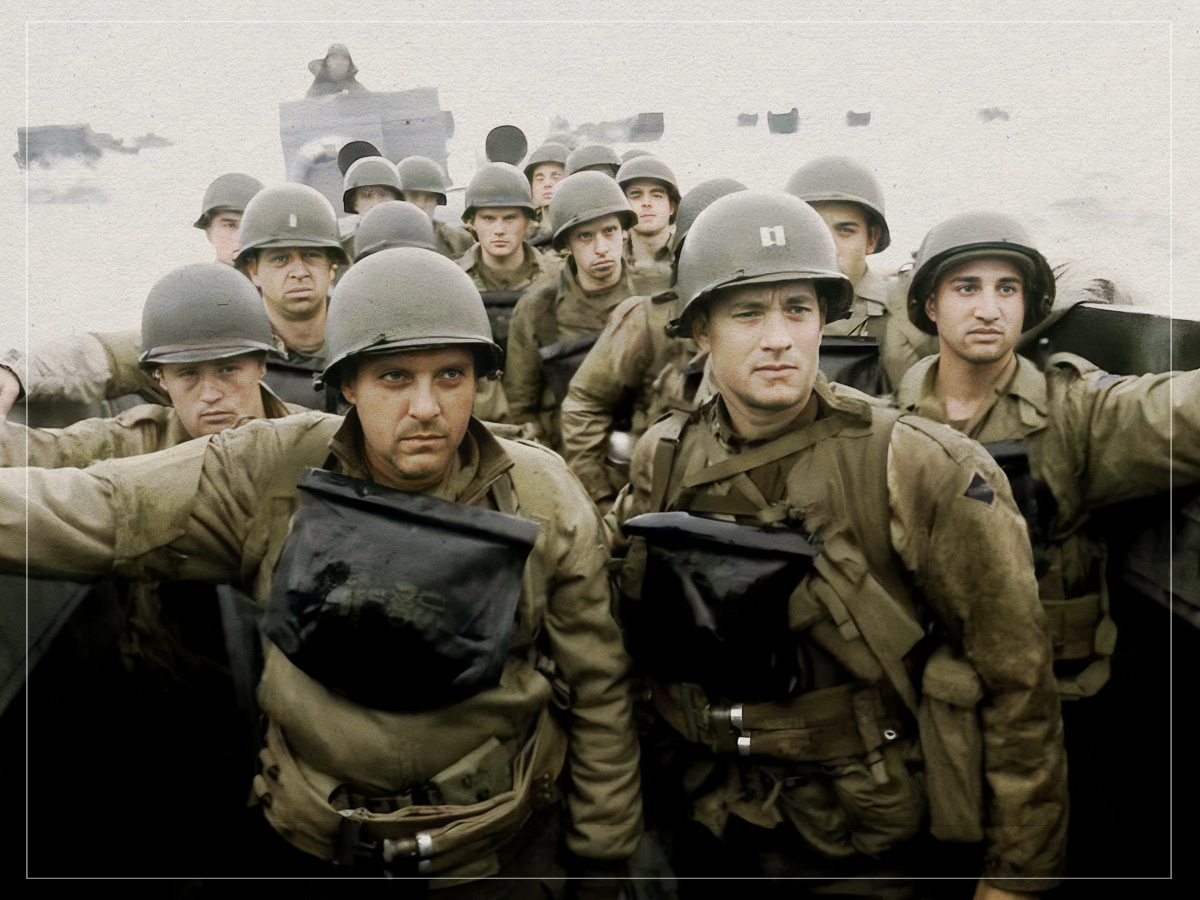
(Credits: Far Out / DreamWorks Pictures)
Tue 17 June 2025 0:30, UK
These days, movie fans are used to hearing about actors putting themselves through rigorous training regimes and researching their parts for months before filming. After all, the drive is for everything to look as authentic as possible, and it’s no longer the done thing to simply rock up on day one to ‘act’ like you know what you’re doing. However, this wasn’t always the case, and the notorious boot camp that Steven Spielberg put his Saving Private Ryan through could be credited with helping popularise the trend.
From the start, Spielberg wanted Saving Private Ryan to be the most harrowingly realistic depiction of war that had ever been put to screen, because he felt that was the only way to truly honour the real soldiers who lost their lives during World War II. So, to ensure his cast gained as much firsthand experience of the physical and mental toll of war as he could safely subject them to, Spielberg hired Marine veteran Dale Dye as a technical advisor on the project, and he organised a six-day boot camp to put the pampered thespians through their paces.
Soon, Tom Hanks, Edward Burns, and the rest of the film’s stars were simulating attacking manoeuvres while in-character, running for five miles at a time with heavy military backpacks on, executing weapons training, and being forced to do push-ups if they made any mistakes. For the entire boot camp, they were running on three hours of sleep, and were made as cold, wet, and miserable as possible – and some of the younger stars wanted to walk away from the punishing experience.
However, Hanks – a history buff and World War II obsessive – took it upon himself to convince his castmates that the boot camp would be worth it in the end, as it would strengthen their performances and bring them together as a unit. They all wound up staying, and in 2018, Dye marvelled at Hanks’ commitment to the cause. He said the iconic star “really is a true believer” and revealed, “We had some people who did not want to do what I was putting them through. And we had this absolutely horsecrap British weather—cold, misting rain all the time. Everybody was soaked, they were living in the mud.”
Indeed, in Dye’s opinion, Hanks was the exact opposite of some of the Hollywood phonies he’d worked with over the years. He was “the real thing” and had the kind of meticulous mind that meant he would never give anything less than 100%, but was also truly interested in how everything worked. With a chuckle, Dye theorised Hanks would have been the kind of child a parent couldn’t give an alarm clock to “because he’ll take it apart in 15 seconds. He’s got that kind of mind.”
At one point, Dye revealed that he was showing Hanks a Thompson submachine gun, and instead of just wanting to know how a real soldier would hold the weapon and fire it, Hanks wanted to deconstruct how it was put together. “I had to sit with him for an hour and go over every little part so that he knew exactly how that Thompson worked,” Dye nodded. “And then I had to teach him land navigation—this is map-and-compass stuff.”
Indeed, Dye admitted that he wound up teaching Hanks “way too much training for what was required of him,” because the Thompson machine gun would only be used in one scene. Still, Hanks was insatiable for the knowledge and knew it would serve him well when it came time to shoot the movie.
Hell, the beloved Forrest Gump star once admitted that he would have loved the boot camp to stretch beyond six days, even claiming, “I wish it had gone on a couple of weeks.” This didn’t necessarily make him popular with his castmates, but it did make him easily Dye’s star pupil.
Related Topics
